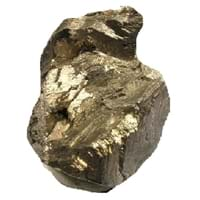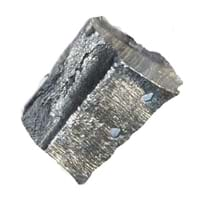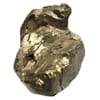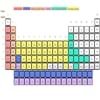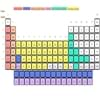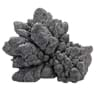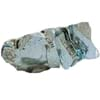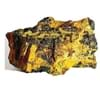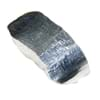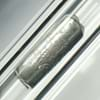Bismuth vs Neodymium
Periodic Table
Symbol
Bi
Nd
Group Number
15
3
1
17
Period Number
6
6
Block
p block
f block
Element Family
Post-Transition
Lanthanide
CAS Number
7440699
22
7440008
99+
Space Group Name
C12/m1
P63/mmc
Space Group Number
12.00
12
194.00
5
Facts
Interesting Facts
- Bismuth metal is soluble and reacts with concentrated nitric acid.
- It oxides are used as a yellow pigment in paint. Bismuth chloride oxide BiClO gives a pearly texture to cosmetics.
- Neodymium is not found free in nature, hence it is not a native metal.
- Neodymium metal found in minerals like Monazite and Bastnaesite.
Sources
Found in Minerals, Mining, Ores of Minerals
Found in Minerals, Mining
History
Who Discovered
Claude François Geoffroy
Carl Auer von Welsbach
Discovery
In 1753
In 1885
Abundance
Abundance In Universe
7 * 10-8 %
25
1 * 10-6 %
16
Abundance In Sun
~0.000006 %
14
~0.0000003 %
24
Abundance In Meteorites
0.00 %
99+
0.00 %
30
Abundance In Earth's Crust
0.00 %
99+
0.00 %
20
Abundance In Oceans
0.00 %
24
0.00 %
30
Uses
Uses & Benefits
- Tin and bismuth alloys have a very low melting point and hence it is used in fire detector and the fire extinguishers. It also used in electric solders and fuses.
- Neodymium-Iron-boron alloy is used to make permanent magnets.
- It is used in microphones, Mp3 player, loudspeakers, mobile phones, etc.
Industrial Uses
Automobile Industry, Chemical Industry, Electrical Industry, Electronic Industry
Aerospace Industry, Electrical Industry, Electronic Industry
Medical Uses
Pharmaceutical Industry
NA
Other Uses
Alloys
Alloys
Biological Properties
Toxicity
Low Toxic
Non Toxic
Present in Human Body
Yes
No
In Blood
0.02 Blood/mg dm-3
20
Not Available
In Bone
0.20 p.p.m.
22
Not Available
Physical Properties
Melting Point
271.30 °C
99+
1,010.00 °C
99+
Boiling Point
1,560.00 °C
99+
3,127.00 °C
28
Appearance
Physical State
Solid
Solid
Color
Silver
Silvery White
Luster
Metallic
Metallic
Hardness
Mohs Hardness
2.25
15
Not Available
Brinell Hardness
70.00 MPa
99+
265.00 MPa
35
Vickers Hardness
Not Available
345.00 MPa
27
Speed of Sound
1,790.00 m/s
99+
2,330.00 m/s
38
Optical Properties
Allotropes
No
No
α Allotropes
Not Available
Not Available
β Allotropes
Not Available
Not Available
γ Allotropes
Not Available
Not Available
Chemical Properties
Chemical Formula
Bi
Nd
Isotopes
Known Isotopes
33
6
30
9
Electronegativity
Pauling Electronegativity
2.02
6
1.14
99+
Sanderson Electronegativity
2.34
3
Not Available
Allred Rochow Electronegativity
1.67
6
1.07
32
Mulliken-Jaffe Electronegativity
2.15
4
Not Available
Allen Electronegativity
2.01
4
Not Available
Electropositivity
Pauling Electropositivity
1.98
99+
2.86
13
Ionization Energies
1st Energy Level
703.00 kJ/mol
35
533.10 kJ/mol
99+
2nd Energy Level
1,610.00 kJ/mol
33
1,040.00 kJ/mol
99+
3rd Energy Level
2,466.00 kJ/mol
99+
2,130.00 kJ/mol
99+
4th Energy Level
4,370.00 kJ/mol
28
3,900.00 kJ/mol
99+
5th Energy Level
5,400.00 kJ/mol
30
Not Available
6th Energy Level
8,520.00 kJ/mol
19
Not Available
Electrochemical Equivalent
2.60 g/amp-hr
19
1.79 g/amp-hr
37
Electron Work Function
4.22 eV
22
3.20 eV
34
Other Chemical Properties
Ionization, Radioactive Isotopes, Solubility
Chemical Stability, Corrosion, Flammable, Ionization
Atomic Properties
Atomic Number
83
33
60
99+
Electron Configuration
[Xe] 4f14 5d10 6s2 6p3
[Xe] 4f4 6s2
Crystal Structure
Rhombohedral (RHO)
Double Hexagonal Close Packed (DHCP)
Crystal Lattice
RHO-Crystal-Structure-of-Bismuth.jpg#100
DHCP-Crystal-Structure-of-Neodymium.jpg#100
Atom
Number of Protons
83
33
60
99+
Number of Neutrons
126
18
84
40
Number of Electrons
83
33
60
99+
Radius of an Atom
Atomic Radius
156.00 pm
29
181.00 pm
13
Covalent Radius
148.00 pm
36
201.00 pm
10
Van der Waals Radius
207.00 pm
26
229.00 pm
20
Atomic Weight
208.98 amu
29
144.24 amu
99+
Atomic Volume
21.30 cm3/mol
14
20.60 cm3/mol
18
Adjacent Atomic Numbers
Valence Electron Potential
41.90 (-eV)
99+
43.40 (-eV)
99+
Lattice Constant
667.40 pm
2
365.80 pm
30
Lattice Angles
NA
π/2, π/2, 2 π/3
Lattice C/A Ratio
Not Available
1.61
4
Mechanical Properties
Density
Density At Room Temperature
9.78 g/cm3
39
7.01 g/cm3
99+
Density When Liquid (at m.p.)
10.05 g/cm3
18
6.89 g/cm3
36
Tensile Strength
Not Available
Not Available
Viscosity
Not Available
Not Available
Vapor Pressure
Vapor Pressure at 1000 K
Not Available
0.00 (Pa)
21
Vapor Pressure at 2000 K
Not Available
101.00 (Pa)
2
Elasticity properties
Shear Modulus
12.00 GPa
99+
16.30 GPa
38
Bulk Modulus
31.00 GPa
38
31.80 GPa
37
Young's Modulus
32.00 GPa
99+
41.40 GPa
40
Poisson Ratio
0.33
11
0.28
16
Other Mechanical Properties
NA
NA
Magnetic Properties
Magnetic Characteristics
Specific Gravity
9.79
30
7.00
99+
Magnetic Ordering
Diamagnetic
Paramagnetic
Permeability
0.00 H/m
6
Not Available
Susceptibility
0.00
6
Not Available
Electrical Properties
Electrical Property
Semiconductor
NA
Resistivity
1.29 nΩ·m
99+
643.00 nΩ·m
6
Electrical Conductivity
0.01 106/cm Ω
99+
0.02 106/cm Ω
99+
Electron Affinity
91.20 kJ/mol
11
50.00 kJ/mol
21
Thermal Properties
Specific Heat
0.12 J/(kg K)
40
0.19 J/(kg K)
32
Molar Heat Capacity
25.52 J/mol·K
37
27.45 J/mol·K
17
Thermal Conductivity
7.97 W/m·K
99+
16.50 W/m·K
99+
Critical Temperature
Not Available
Not Available
Thermal Expansion
13.40 µm/(m·K)
28
9.60 µm/(m·K)
99+
Enthalpy
Enthalpy of Vaporization
151.00 kJ/mol
99+
273.00 kJ/mol
34
Enthalpy of Fusion
10.90 kJ/mol
33
7.14 kJ/mol
99+
Enthalpy of Atomization
207.10 kJ/mol
99+
322.00 kJ/mol
32
Standard Molar Entropy
56.70 J/mol.K
24
71.50 J/mol.K
13
|
||
|
||
|
